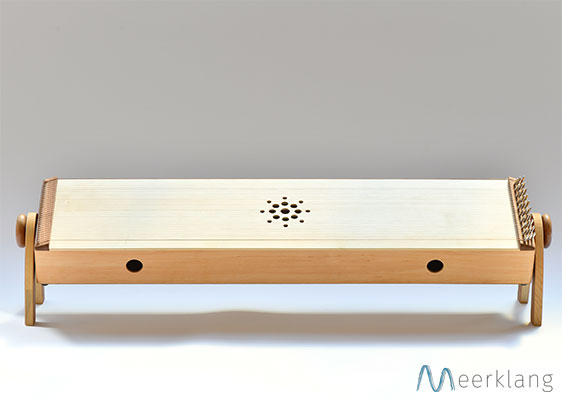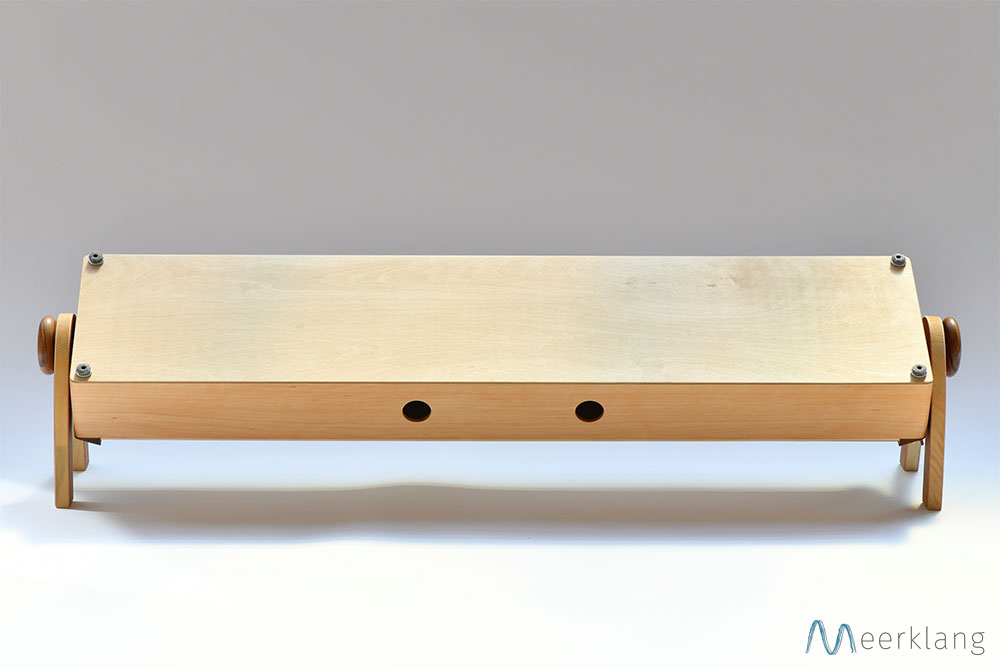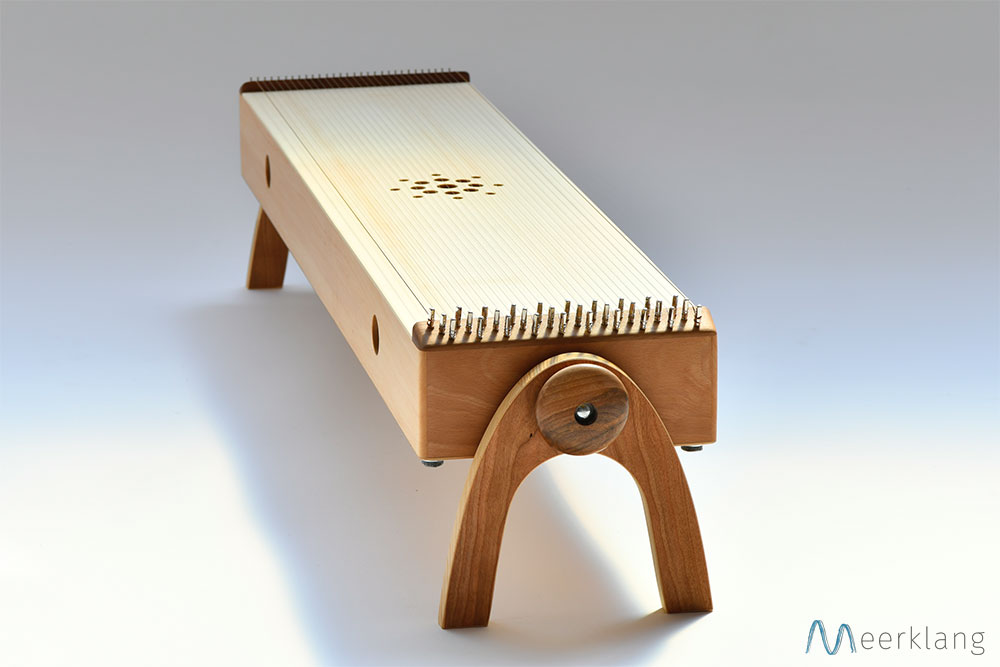Monochord
The classic instrument for sound meditation
The monochord impresses with its overtone-rich, full and deep sound, which immediately allows you to calm down and opens up levels that would otherwise only be accessible with some meditation experience. The way of playing is extremely simple and can be learned by anyone within a few minutes.
Sound
All strings of the monochord are tuned to the same ground note, with the two outer strings each being an octave lower than the others in order to fill the sound in the bass range. Although you don’t play any melodies on the monochord, but only create a flowing, sparkling continuous tone, you notice after a short time, that melody-like structures develop in the overtone range all by themselves.Through direct experience you can experience that one tone contains many other tones. Many people experience a feeling of deep connection and peace when they play the instrument for a few minutes or simply listen.
Applications
Versions
The Monochord is available as standard in three different sizes:
| Length | Width | Height | Tuning | Number of strings |
|---|---|---|---|---|
| 106 cm | 24 cm | 10 cm | D | 30 |
| 126 cm | 24 cm | 10 cm | C | 30 |
| 155 cm | 24 cm | 10 cm | A | 25 |
If you want to order the instrument in other dimensions, this is of course also possible.





